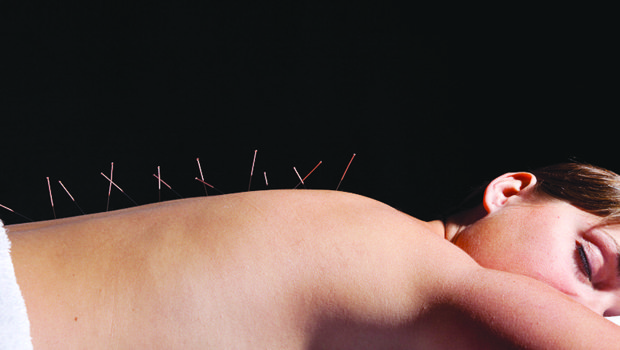Acupuncture for Pain Management
Acupuncture has long been recognized as both an effective alternative and complement to traditional Western medicine, specifically when implemented to manage pain and assist in the maintenance of personal health and overall well-being. Treatment plans can be designed to help patients manage a wide range of issues that include stress, fatigue, allergies, chronic aches, migraines and gynecological problems.
Acupuncture encourages and augments the body’s natural healing process through the insertion of needles, and sometimes the application of heat or electrical stimulation, to precise points on the body. According to the American Academy of Medical Acupuncture, “The classical Chinese explanation is that channels of energy run in regular patterns through the body and over its surface. These energy channels, called meridians, are like rivers flowing through the body to irrigate and nourish the tissues. An obstruction in the movement of these energy rivers is like a dam that backs up in others.” Acupuncture essentially restores the flow of energy through these meridians, correcting imbalances in the body and promoting peak functionality of the central nervous system, as well as internal organs.
Over thousands of years, more than 2,000 distinct acupuncture points have been identified on the human body. These points are connected by meridians through which energy must pass freely in order to create optimal wellness. Any disturbance in this flow can result in illness and/or dysfunction. Acupuncture is designed to remove, or at least moderate, these disturbances.
Acupuncture is an effective remedy for aches and pains because it prompts the central nervous system to emit chemicals that allow the body to regulate its internal systems, restore balance and promote natural healing. The main component of the central nervous system—the human brain—perceives pain via impulses sent throughout the body. These impulses are triggered by the release of neurotransmitter chemicals that are already present in the body. By altering the amount of chemicals being secreted into the central nervous system, acupuncture treatments can create an analgesic effect and provide pain relief without the use of potentially harmful and/or addictive medications.
Many of the remedies and medications that currently are being offered to patients to help mitigate pain may do nothing more than mask or hide discomfort while the body repairs the underlying condition that has been causing the pain. Acupuncture, on the other hand, delivers a multifaceted approach to pain management and not only decreases a patient’s level of discomfort, but also stimulates the body’s own natural healing response by increasing endorphin levels and reducing the nervous system’s sensitivity to pain. Acupuncture also increases the body’s circulation, which decreases inflammation, relaxes tight and overused muscles and stops spasms.




























